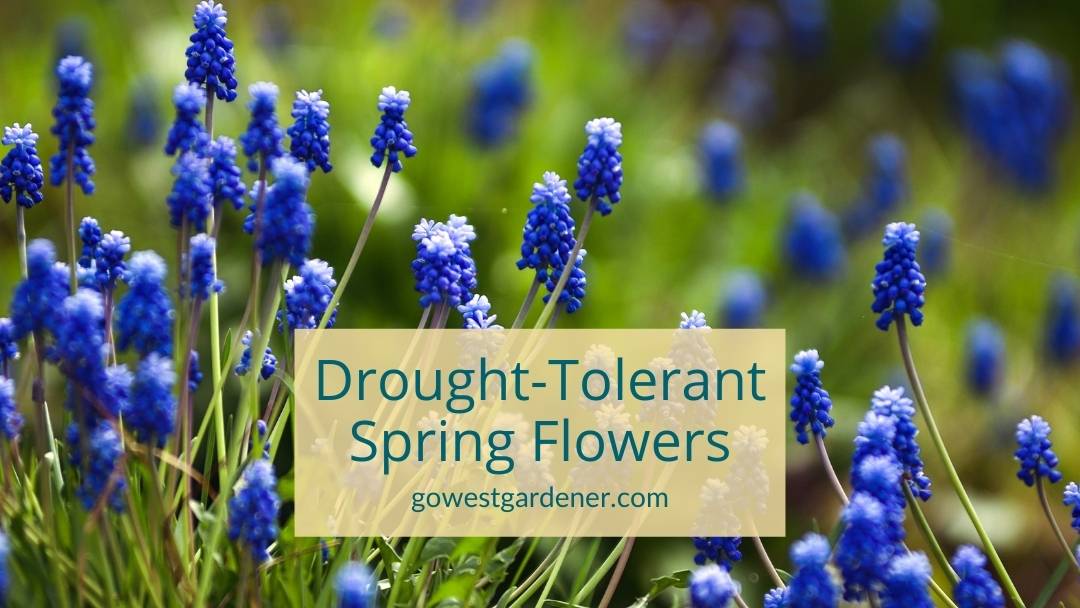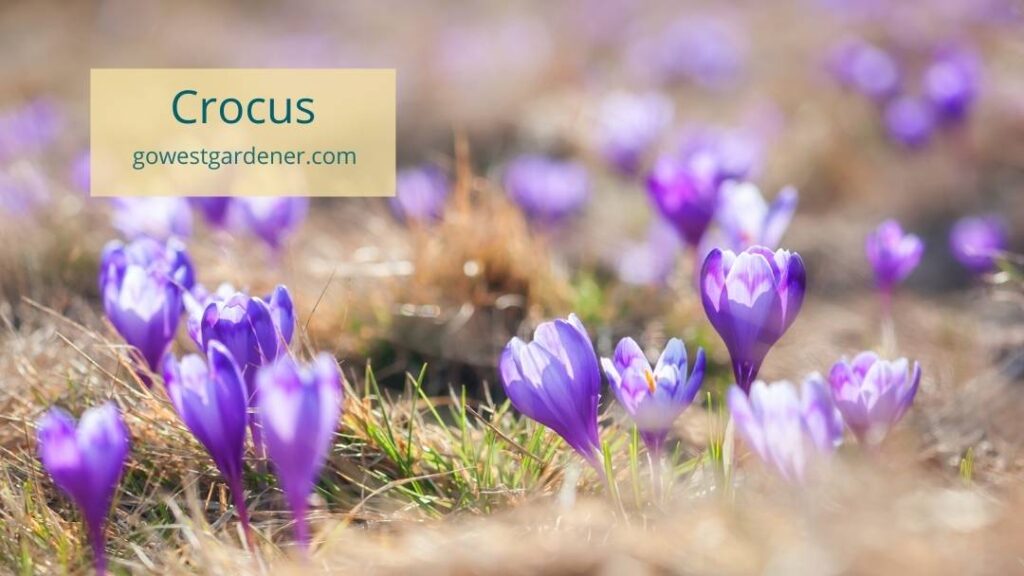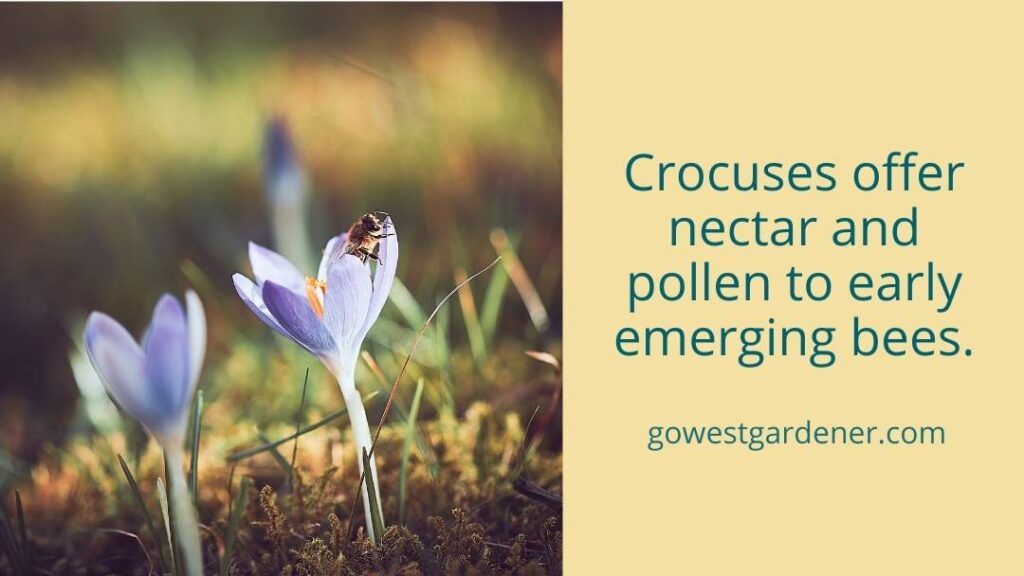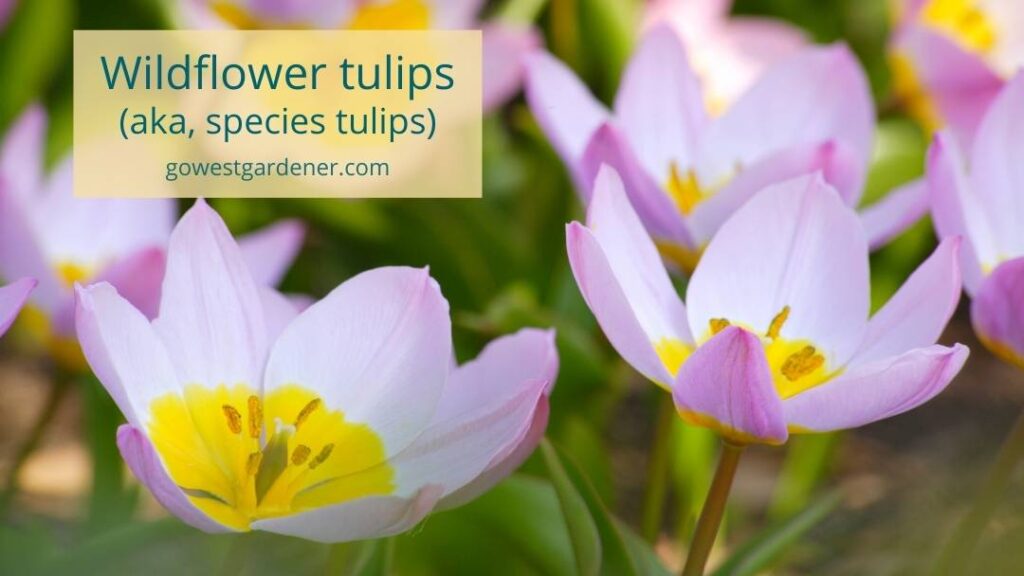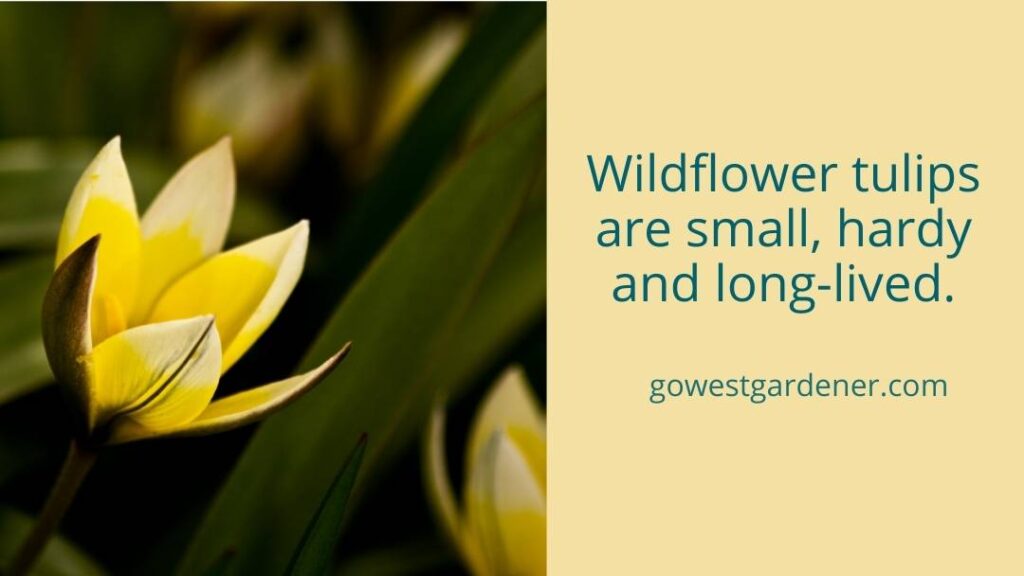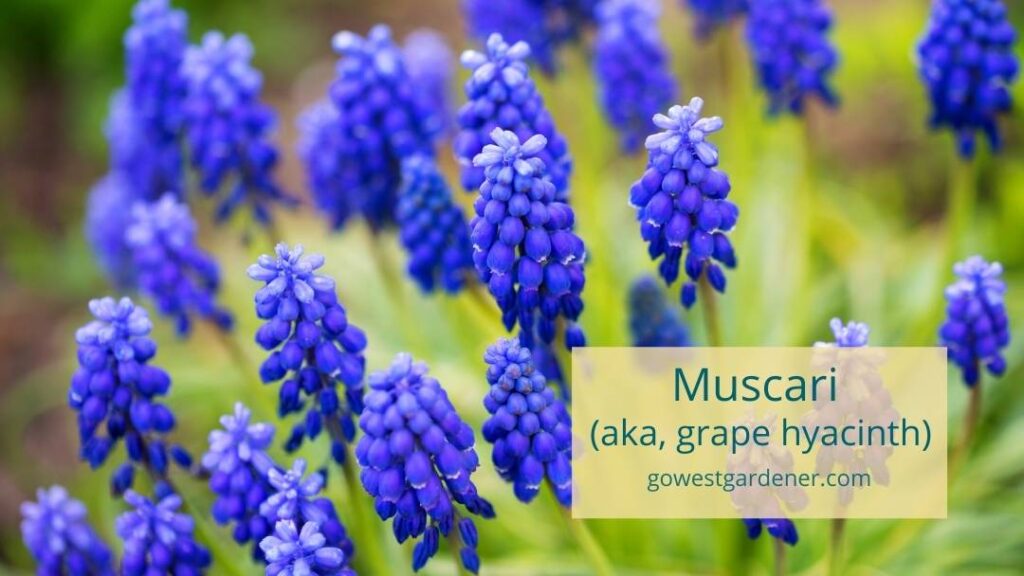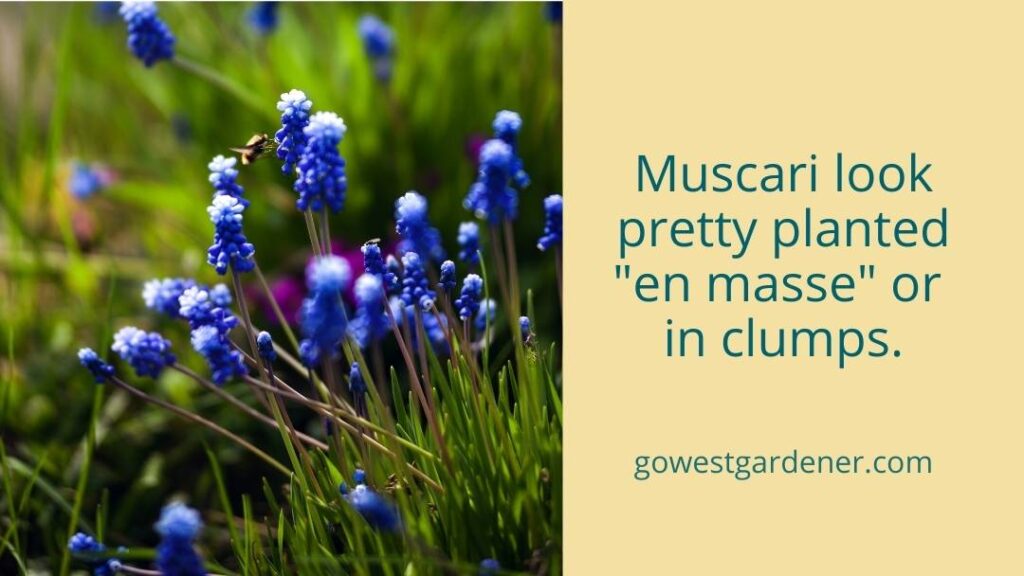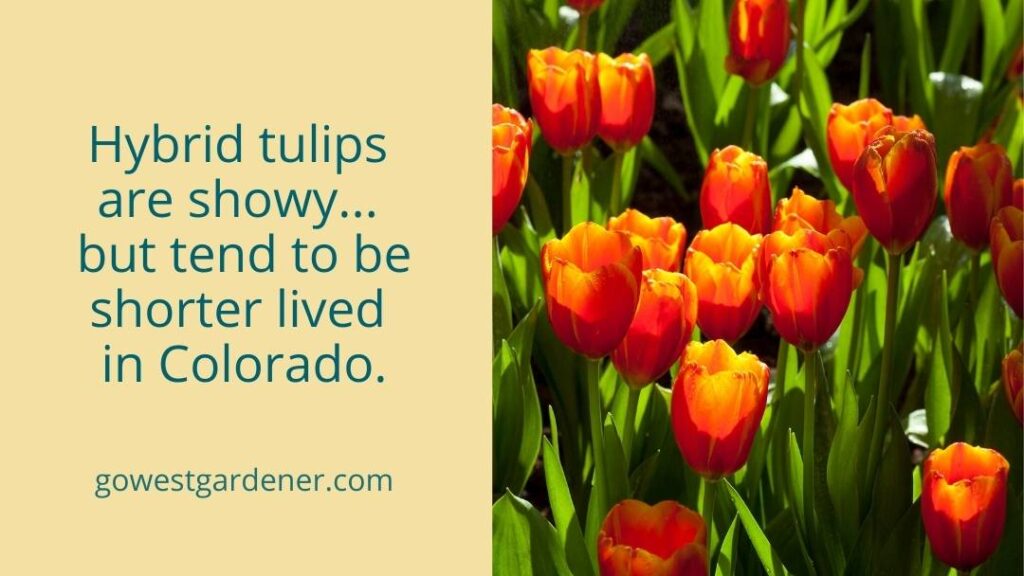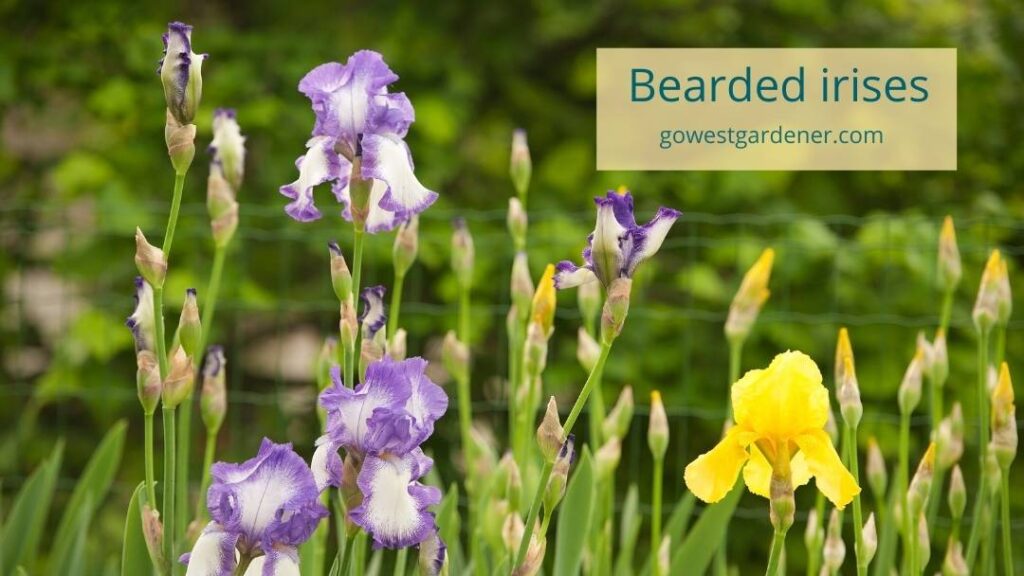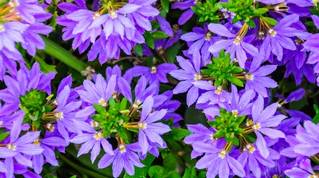Most of these spring flowers are low maintenance too!
Let’s say you want to add a splash of color to your spring garden, but you live someplace dry, like Colorado or Utah. It would be nice to find spring flowers that don’t need a lot of watering, right? (Less work for you—and good for Mama Nature too!)
The question is: Are there drought-tolerant spring flowers? Yes!
Here are 5 drought-tolerant spring flowers that can grow well in sunny, dry gardens in Colorado, Utah and similar states. They’ll keep your watering and work to a minimum.
Most of these flowers get planted in the fall.
Crocus
Crocuses are drought-tolerant spring flowers that come in a variety of colors, like purple, white, gold, yellow and lavender.
You plant crocus bulbs (known as “corms”) in the fall, and they bloom early in the spring. Their early spring blooms are important because they can offer nectar and pollen for early emerging bees. Plus, it’s nice to see pretty color in your garden after a long winter.
These small flowers tend to look the showiest when you plant a mass of them together (“en masse” or “in drifts”). Crocuses also can look pretty when you plant them in small clumps of flowers. Just avoid planting them individually because you won’t get that showy splash of color.
Garden lingo bingo: Crocuses “naturalize” easily. This means they should increase in number and come back each year. Yesss!
Wildflower tulip
Wildflower tulips are another drought-tolerant spring flower for sunny, dry gardens.
They’re the smaller cousins of the showy tulips you’ll see in the spring. Wildflower tulips aren’t as flashy as their cousins, but they tend to be hardier, more reliable and last many more years.
These tulips are sometimes called “species tulips.” These lil’ guys are from the wild species of tulips.
Wildflower tulips have more of a natural, western vibe than their cousins. They’re a pretty addition to sunny rock gardens, front borders of gardens and natural-looking landscapes.
You can even plant them in “warm season” lawns—grass that doesn’t green up until it gets hot—like buffalo grass. Warm season lawns are usually drought tolerant and don’t need a lot of water, so wildflower tulips are a good match.
Wildflower tulips are a spring flowering bulb. You plant them in the fall, and they bloom in early- to mid-spring. They’re another spring flower that can “naturalize” in gardens. They should multiple and come back each year.
Pollinator tip! Wildflower tulips offer a good source of nectar and pollen for many hungry bees that are emerging after winter.
Muscari / grape hyacinth
First, a lil’ more garden lingo bingo…
In casual conversation, you’ll hear these flowers called both muscari and grape hyacinth. (Can you see their resemblance to small clusters of grapes in the photo above?) I suggest using the name: “muscari.” Why? Because there’s another spring flower known as a hyacinth too, but it isn’t related. It can get confusing.
Muscari are small flowers that bloom in mid-spring.
One of the most popular muscari (Muscari armeniacum) comes in a beautiful, deep blue color. Yes, blue! But you can find other colors too, including white, purple and yellow.
This is another flower that tends to look showiest when you plant quite a few of them together. I think they look pretty when they’re planted next to silver-leafed plants. I love the contrast.
Muscari are drought-tolerant spring flowering bulbs. You plant them in the fall, and they bloom in the spring. They can tolerate clay soil (the dirt that many of us have), as well as dry conditions. Very helpful for gardens in Colorado, Utah and the intermountain west!
This is another flower that will attract pollinators, like bees. They’ll naturalize too (coming back year after year).
Hybrid tulip
These are the classic tulips you’ll see in the spring. Typically, they don’t mind our dry conditions in states like Colorado and Utah.
Hybrid tulips can be short lived and a little unpredictable in the intermountain west. Some will only last a few years. But they sure are showy while you have them.
Worth noting… tulips are popular with more than just people. Critters love them too. If deer, rabbits, squirrels or other wildlife have been known to treat your garden as an all-you-can-eat buffet, you may want to skip tulips. Fending off critters may not be a low maintenance experience.
Hybrid tulips grow from bulbs that—yep, you guessed it—you plant in the fall.
Bearded iris
Bearded irises come in a full spectrum of colors—just about every color you can imagine!
They remind me of where I grew up in Michigan. I was excited to learn these late spring flowers also thrive in sunny, dry gardens in the West. I’ve seen bearded irises growing as far south as the Tucson Botanical Gardens in southern Arizona.
There are many things to like about bearded irises in semi-arid states like Colorado and Utah.
Bearded irises are drought tolerant, so they look good even with our low precipitation. You can grow them in our alkaline soils (our tricky western dirt). They’re rabbit resistant AND deer resistant, which means rabbits and deer prefer to eat other plants first. And overall, irises don’t like a lot of fuss.
Yay for low maintenance spring flowers!
Bearded irises don’t grow from a bulb. Instead, they grow from “rhizomes” you plant in July, August or September. Rhizomes look like narrow, little potatoes. A rhizome is actually a modified stem of the plant. (Isn’t nature cool?)
When you plant your irises from July to September, you’ll give them time to establish their roots before it gets too cold.

